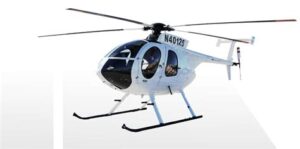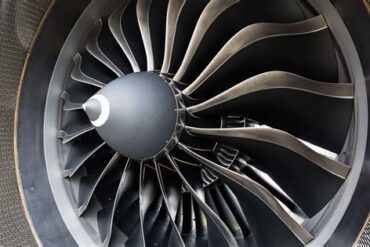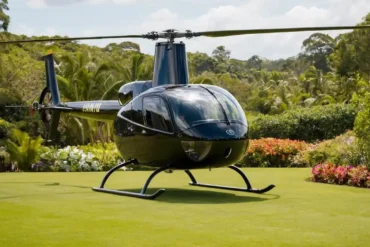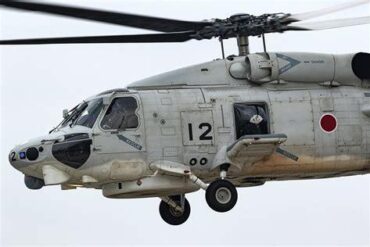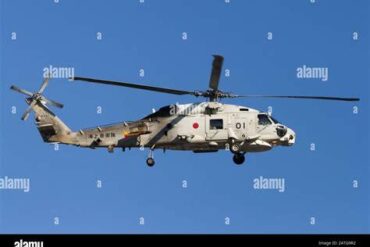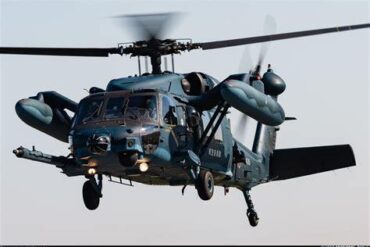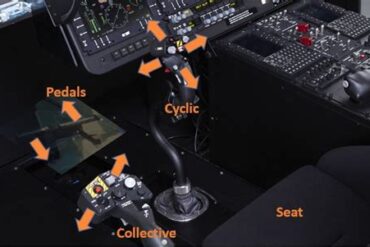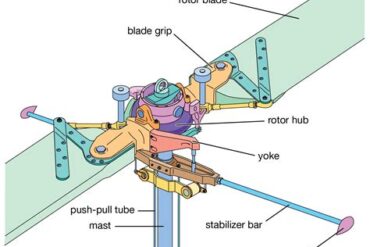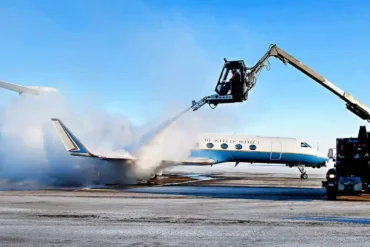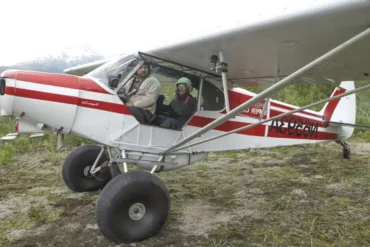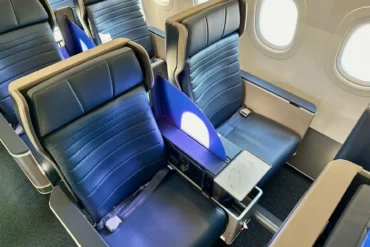The helicopter industry has witnessed tremendous growth over the past few decades, driven by advancements in technology, the expansion of civilian and military applications, and the increasing demand for versatile aerial vehicles. Helicopters are essential in various sectors, including defense, emergency medical services (EMS), law enforcement, tourism, and offshore oil and gas operations. This guide provides an in-depth analysis of the leading helicopter manufacturers globally, exploring their contributions, innovations, and the key models that define their portfolios.
The Leading Helicopter Manufacturers
Airbus Helicopters: A Global Giant
Airbus Helicopters, a division of the larger Airbus Group, is one of the most prominent names in the industry. The company has established itself as a leader in both civilian and military helicopter markets, offering a wide range of models tailored to different missions.
Airbus H125 and H130
The H125 and H130 are among the most popular models in the Airbus portfolio, known for their performance, versatility, and reliability. The H125, formerly known as the AS350 Écureuil, is particularly favored in high-altitude missions and law enforcement due to its powerful engine and exceptional maneuverability. The H130, on the other hand, is a preferred choice for tourism and medical evacuation, thanks to its spacious cabin and low noise levels.
Military Offerings: H145M and Tiger
In the military sector, Airbus has made significant strides with models like the H145M and the Tiger. The H145M is a light utility helicopter equipped with advanced avionics and weaponry, making it suitable for a wide range of missions, from reconnaissance to combat support. The Tiger, an attack helicopter, is renowned for its agility, stealth capabilities, and cutting-edge technology, making it a formidable asset in modern warfare.
Bell Helicopter: Pioneers of Vertical Flight
Bell Helicopter, a subsidiary of Textron Inc., has been a pioneer in the helicopter industry since its inception. Known for developing the first commercially certified helicopter, Bell continues to lead in innovation and reliability.
Bell 206 and Bell 407
The Bell 206 JetRanger, introduced in the 1960s, set the standard for light helicopters with its ease of handling and affordability. Its successor, the Bell 407, continues this legacy with enhanced performance, speed, and comfort. The Bell 407 is widely used in law enforcement, EMS, and corporate transport due to its versatility and dependability.
Military Contributions: V-22 Osprey and AH-1Z Viper
Bell’s contributions to the military sector are noteworthy, particularly with the development of the V-22 Osprey and the AH-1Z Viper. The V-22 Osprey is a tiltrotor aircraft that combines the vertical takeoff and landing capabilities of a helicopter with the speed and range of a fixed-wing aircraft. It is a critical asset for the U.S. Marine Corps, providing unparalleled operational flexibility. The AH-1Z Viper, an advanced attack helicopter, is equipped with state-of-the-art avionics and weapons systems, ensuring dominance on the battlefield.
Sikorsky Aircraft: A Legacy of Innovation
Sikorsky Aircraft, a Lockheed Martin company, is synonymous with innovation in the helicopter industry. Founded by aviation pioneer Igor Sikorsky, the company has a rich history of developing groundbreaking helicopters that have redefined aerial capabilities.
UH-60 Black Hawk: The Workhorse of the Military
The UH-60 Black Hawk is perhaps the most iconic helicopter in Sikorsky’s lineup. Introduced in the 1970s, the Black Hawk has become the backbone of the U.S. Army’s helicopter fleet, excelling in a wide range of missions, from troop transport to medical evacuation and combat assault. Its robust design, reliability, and adaptability have led to its adoption by numerous military forces around the world.
Civilian Success: S-92 and S-76
In the civilian sector, Sikorsky’s S-92 and S-76 models have garnered widespread acclaim. The S-92, a medium-lift helicopter, is widely used in offshore oil and gas operations, search and rescue (SAR), and VIP transport due to its safety features and long-range capabilities. The S-76, with its sleek design and quiet operation, is a preferred choice for corporate transport and EMS.
Leonardo Helicopters: Italian Excellence in Aviation
Leonardo Helicopters, formerly known as AgustaWestland, is a key player in the global helicopter market, known for its innovative designs and high-performance models. The company offers a broad range of helicopters for both civilian and military applications.
AW139 and AW169: Versatility at its Best
The AW139 is one of Leonardo’s most successful models, offering a perfect balance of speed, range, and payload capacity. It is extensively used in offshore transport, SAR, and law enforcement. The AW169, a lighter and more versatile model, is ideal for EMS, VIP transport, and utility missions, thanks to its advanced avionics and spacious cabin.
Military Innovations: AW101 and AW159
Leonardo has also made significant contributions to military aviation with models like the AW101 and AW159. The AW101, a medium-lift helicopter, is used for a variety of missions, including anti-submarine warfare, transport, and SAR. Its three-engine configuration provides exceptional safety and redundancy. The AW159, also known as the Wildcat, is a modern multi-role helicopter equipped with advanced sensors and weaponry, making it a formidable asset in maritime and land-based operations.
Russian Helicopters: Robust and Reliable Designs
Russian Helicopters, a subsidiary of Rostec, is the leading helicopter manufacturer in Russia and a major player on the global stage. The company is known for producing rugged and reliable helicopters that perform well in harsh environments.
Mi-8/17: The Backbone of Russian Aviation
The Mi-8/17 series is the most widely produced helicopter in the world, with over 12,000 units manufactured since its introduction. These helicopters are used in various roles, including transport, medical evacuation, and military missions. The Mi-8/17’s simplicity, durability, and ability to operate in extreme conditions have made it a favorite among operators in challenging environments.
Ka-52 Alligator: A Modern Attack Helicopter
The Ka-52 Alligator is a twin-seat attack helicopter known for its advanced avionics, heavy armament, and unique coaxial rotor system, which provides superior agility and eliminates the need for a tail rotor. The Ka-52 is designed for reconnaissance and combat missions, capable of engaging both ground and air targets with precision.
Key Considerations When Choosing a Helicopter Manufacturer
When selecting a helicopter manufacturer, several factors must be considered to ensure the best match for your operational needs. These include the mission profile, budget, maintenance support, and availability of training programs. Understanding the unique strengths and offerings of each manufacturer can help you make an informed decision.
Mission Profile and Operational Requirements
The primary consideration when choosing a helicopter is its intended mission. Manufacturers offer a wide range of models designed for specific applications, such as EMS, SAR, law enforcement, and military operations. It is essential to evaluate the helicopter’s performance characteristics, including speed, range, payload capacity, and operating altitude, to ensure it meets your operational requirements.
Cost and Budget Constraints
Budget is a critical factor in the decision-making process. Helicopters are significant investments, with costs varying widely based on the model, configuration, and intended use. It is important to consider not only the initial purchase price but also the long-term costs of ownership, including maintenance, fuel, and crew training. Some manufacturers offer leasing options and financing programs to help manage these costs.
Maintenance and Support Services
Reliable maintenance and support services are crucial for the safe and efficient operation of helicopters. Leading manufacturers provide comprehensive maintenance programs, including spare parts availability, technical support, and field service teams. It is advisable to choose a manufacturer with a strong global support network to minimize downtime and ensure prompt assistance in case of technical issues.
Training and Simulation Programs
Pilot and crew training is another important consideration. Many manufacturers offer training programs and simulation services to ensure that operators are fully prepared to handle their aircraft safely and effectively. These programs often include classroom instruction, flight simulation, and hands-on training in real aircraft.
The Future of Helicopter Manufacturing
The future of helicopter manufacturing is poised for exciting developments as the industry continues to embrace new technologies and respond to evolving market demands. Key trends include the integration of electric and hybrid propulsion systems, the development of autonomous and unmanned aerial vehicles (UAVs), and the adoption of advanced materials and manufacturing techniques to improve performance and reduce costs.
Electric and Hybrid Propulsion Systems
The push for sustainability and the reduction of carbon emissions is driving the development of electric and hybrid propulsion systems in the helicopter industry. These technologies promise to reduce fuel consumption, lower operating costs, and decrease the environmental impact of helicopter operations. Several manufacturers are already working on prototypes and experimental models, with the first electric helicopters expected to enter service in the coming years.
Autonomous Helicopters and UAVs
Autonomous helicopters and UAVs represent a significant leap forward in aerial technology. These vehicles are designed to operate without a pilot, either remotely controlled or fully autonomous, offering new possibilities for surveillance, cargo transport, and other missions. While still in the experimental stage, autonomous helicopters are expected to play a growing role in both civilian and military applications.
Advanced Materials and Manufacturing Techniques
The use of advanced materials, such as composites and lightweight alloys, is becoming increasingly common in helicopter manufacturing. These materials offer superior strength-to-weight ratios, improving the helicopter’s performance, fuel efficiency, and payload capacity. Additionally, advancements in manufacturing techniques, such as 3D printing and automated assembly, are helping manufacturers reduce production costs and accelerate time-to-market for new models.
Conclusion
Helicopter manufacturers play a crucial role in shaping the future of aviation, providing versatile and reliable aircraft that meet the diverse needs of civilian and military operators worldwide. By understanding the strengths and innovations of leading manufacturers like Airbus Helicopters, Bell Helicopter, Sikorsky Aircraft, Leonardo Helicopters, and Russian Helicopters, operators can make informed decisions when selecting the right helicopter for their missions. As the industry continues to evolve, the adoption of new technologies and the pursuit of sustainable solutions will drive the next generation of helicopters, ensuring they remain indispensable tools in various sectors.
